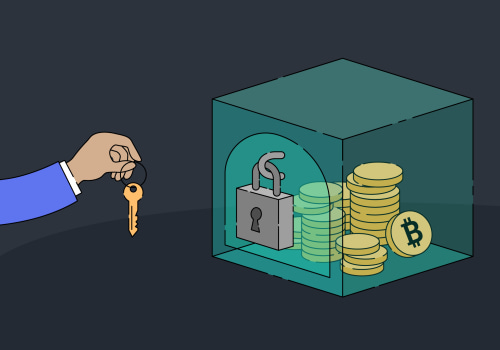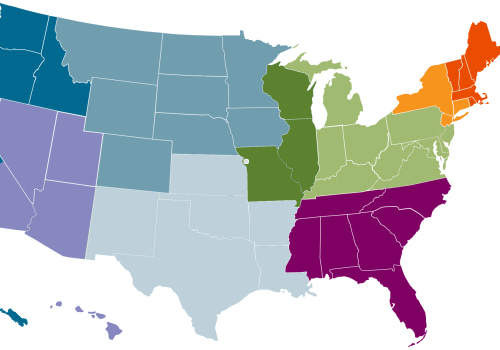When it comes to managing your finances, organizing your tax documents is an important part of the process. Keeping track of all your financial records is essential for filing your taxes accurately and on time. To make the process easier, we’ve put together a step-by-step guide to help you organize all your tax documents. From understanding the different types of documents to tips for staying organized, this guide will ensure that you have the information you need when it comes time to file your taxes. Start by gathering all of your tax documents into one place.
This includes W-2s, 1099s, receipts, and any other documents related to income or deductions. You should also include any documents related to investments, such as stocks, bonds, mutual funds, and retirement accounts. Once you have gathered all of your documents, it's a good idea to create a filing system. This can be done digitally or physically, depending on your preferences.
If you choose to do it digitally, you can use a cloud storage system such as Google Drive or Dropbox. If you prefer a physical system, you can purchase folders or filing boxes and label them according to categories such as income, deductions, investments, etc. It's also a good idea to keep track of your receipts. This is especially important if you are claiming deductions on your taxes.
Receipts should be kept in an organized manner so that they are easy to access when needed. For example, you can create categories such as medical expenses, charitable donations, and business expenses. You should also keep track of changes to any financial information throughout the year. This includes any changes in income, deductions, investments, or other financial information.
Keeping track of these changes will help ensure that your taxes are accurate and up to date. Finally, it's important to set aside some time each year to review your financial information and make sure that all of your documents are up to date and accurate. This will help ensure that your taxes are filed correctly and on time. The above steps and strategies will help you get organized when it comes to tax preparation. By following these steps and creating an organized filing system, you can make tax time much simpler.
Track Changes in Financial Information
You should also keep track of changes to any financial information throughout the year.This includes any changes in income, deductions, investments, or other financial information. Keeping a record of your income, deductions, and investments is key to successful tax preparation. Tracking these changes will help you when it comes to filing your taxes. For example, if you have had a change in income, deductions, or investments during the year, you will need to report this information when you file your taxes.
It is important to keep track of these changes throughout the year so you can easily access the information when it comes time to file your taxes. You should make sure to keep copies of any documents that show changes in your financial situation. This may include pay stubs, bank statements, investment statements, and other documents that show changes in your financial information. By keeping these documents, you will have an easier time preparing and filing your taxes.
Gather All Documents in One Place
Start by gathering all of your tax documents into one place.This includes W-2s, 1099s, receipts, and any other documents related to income or deductions. Take some time to go through each document and make sure that all of the information is accurate. If there are any discrepancies, make sure to contact the issuer of the document to correct them. Organizing your documents into folders or binders can help keep everything in one place and make it easier to find what you need. Label each folder with the type of document it contains, such as W-2s, 1099s, or receipts.
You can also sort documents by year or tax filing status. If you have a lot of paper documents, it’s a good idea to scan them and store them digitally. This allows you to easily access the information when you need it and can help reduce clutter. Be sure to store digital copies in a secure location, such as a password-protected cloud storage service.
Set Aside Time for Reviewing Financial Information
Setting aside time for reviewing your financial information is an essential part of successful tax preparation. It is important to take the time to review all of your documents and make sure that everything is up-to-date and accurate before filing your taxes.It can be helpful to schedule regular reviews of your documents throughout the year to make sure that you are not missing any important information. This can also help you identify any potential mistakes or discrepancies that may arise. Additionally, you may want to take the time to review your records from the previous year and compare them to the current year’s documents to make sure that everything is consistent. You should also consider setting aside a specific day or period of time to focus solely on reviewing your financial information.
This will help ensure that you are giving yourself enough time to properly review all of your documents and make any necessary changes or adjustments.
Keep Track of Receipts
It's also a good idea to keep track of your receipts. Keeping receipts will help you accurately file your taxes and maximize any deductions you may be eligible for. Receipts can serve as evidence of any eligible expenses for which you may be able to claim deductions. Organizing and filing your receipts is an important part of successful tax preparation.You can store them in a physical folder or in a digital format. If you choose to keep them digitally, make sure to back them up regularly on an external hard drive or cloud storage. It’s also a good idea to label each receipt and organize them by year, so you can easily find them when you need them. If you are self-employed or have multiple sources of income, you may want to consider hiring a professional accountant or bookkeeper to help you keep track of your receipts and other records related to your taxes. This will help ensure that all of your records are accurate and up-to-date.}
Create a Filing System
Once you have gathered all of your documents, it's a good idea to create a filing system.You may choose to use a filing cabinet, an app, or a combination of both.
Organizing
your documents into categories and folders will make it easier to find what you need when tax season comes around. When creating a physical filing system, it is important to label each folder with the appropriate category. This will make it easier to find the documents that you need quickly.It is also a good idea to create a master list of all of the documents and their categories so that you can reference it when needed. If you decide to go digital, consider using an app or cloud storage service to store your tax documents. With this option, you can easily search for documents and categorize them by tags. Additionally, cloud-based storage services are secure and make it easy to access your documents from anywhere. Organizing tax documents doesn't have to be a daunting task.
By gathering all documents in one place, creating a filing system, keeping track of receipts, tracking changes in financial information, and setting aside time for reviewing financial information, you can make tax time much simpler.







